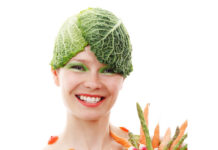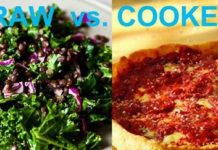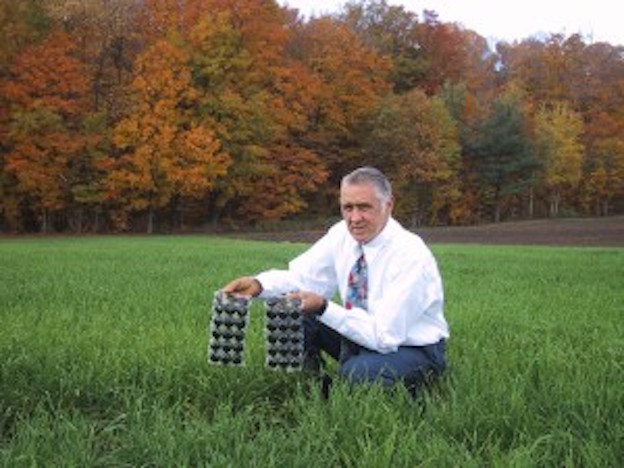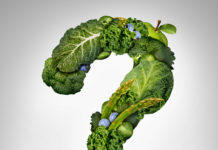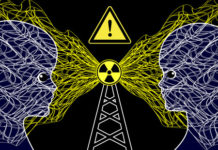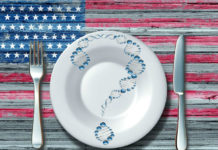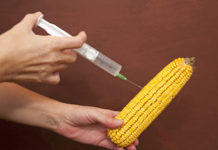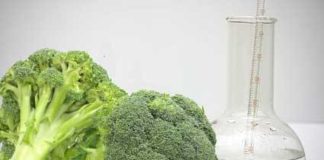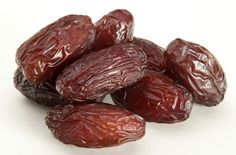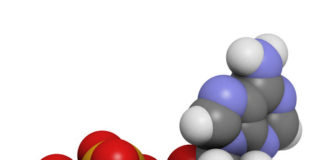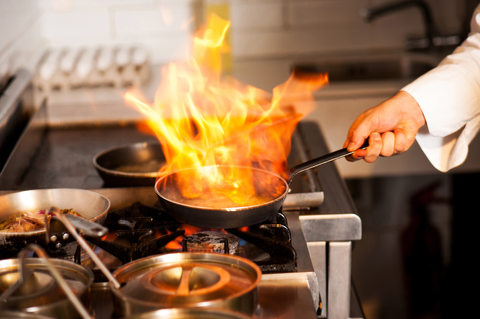 If nutritional studies tested all the variables in their research, they would have to consider cooking to be a key variable. But they don’t do that! If they did, then all nutritional studies on fruits and vegetables would have plenty of data comparing cooked foods with uncooked foods. Instead, they’re all just “junk science!”
If nutritional studies tested all the variables in their research, they would have to consider cooking to be a key variable. But they don’t do that! If they did, then all nutritional studies on fruits and vegetables would have plenty of data comparing cooked foods with uncooked foods. Instead, they’re all just “junk science!”
Did all these highly-qualified scientists just forget that cooking is a variable? Or is there some deeper subconscious bias?
I believe that cooking is so ubiquitous in our cultural history that it hasn’t even occurred to nutritional scientists that cooking is indeed a variable! They think of it as a constant. Most people in general think like that. Broccoli doesn’t need to be cooked at all, but it doesn’t even occur to most people NOT to cook it.
The fact that most nutritional studies ignore such a vital and an important variable like that renders them all junk science — biased at best and, at worst, intentionally misleading. Even if they didn’t cook food in a study, we’ll usually never know because it just isn’t a variable!
However, you can extrapolate from a study important conclusions about raw food. For example, we can say that a diet rich in fruits and vegetables reduces cancer. Since some nutrients are destroyed by heat we can extrapolate that eating the suggested fruits and veggies in their whole, raw state may provide more of the benefits suggested by the study.
To claim that your body doesn’t need the enzymes in food is also highly counter-intuitive. It just doesn’t pass the common sense test. Perhaps you also don’t need the vitamin C in the food (also destroyed by heat). I believe that if nature and evolution put it in there, then our body is designed or evolved to utilize it.
Though the body does make enzymes and can transport them to the stomach, it is a waste of energy and resources if you can get the same enzymes in the food in the first place. In addition, producing additional enzymes can produce stress on organs like the pancreas that have problems of their own in our culture.
Finally, though some enzymes are destroyed in the stomach, that is not the whole truth and is a common misconception, especially among nutritionists – because that is what they were taught! On the contrary, it has been shown that plenty of enzymes do make it through digestion. Lipase, for example, is an enzyme that helps your body break down fat. Protease helps break down proteins and eliminate toxins, essential when you are burning fat.
HERE IS THE RAW TRUTH
The most important problem with cooking isn’t the dead enzymes, dead life-force, dead vitamins, indigestible caramelized proteins and concentrated sugars or simple starches. You can debate that your body can make enzymes or that you get enough vitamins anyway. You can even say even that some nutrients in food are actually better or more easily absorbable after cooking. There is some truth in all of that.
But that’s not the whole truth! You see, on a mostly raw food diet you actually don’t need the occasional nutrients that may be released by cooking since you get everything you need by not destroying the nutrients in your food by cooking them to death in the first place!
But here is the REAL bottom line — the biggest problem with cooking is that it creates most of the toxins that cause many of the diseases we are all trying to prevent, from diabetes to cancer. By eating a raw food diet, you are not consuming these toxins created by cooking that are so destructive, preventing many health problems and maximizing your immune system’s innate ability to fight off many of these problems.
—————————–
 The Case for a Raw Food Diet
The Case for a Raw Food Diet
4/7/08, By Kim Pierce
DALLAS – A raw-food diet – basically raw fruits, vegetables and whole grains – has plenty of advocates, but whether it’s the right choice for a cancer patient is open to question.
In a matter of seconds, you can find numerous testimonials online about its health benefits. However, finding peer-reviewed scientific studies, much less specific research on raw foods and cancer, is harder.
“There are only a couple dozen studies worldwide on relationships between raw-foods diets and anything else,” says Suzanne Havala Hobbs, a registered dietitian with a special interest in vegetarian nutrition who has tracked the raw-foods movement. She knows of no studies on raw foods and cancer.
“What you could say about a raw-foods diet and cancer risk or cancer treatment could be something that’s extrapolated and kind of surmised,” she says, “based upon the body of evidence related to diet and cancer in general.”
Still, Hobbs, who’s on the faculty in the school of public health at the University of North Carolina, is far from dismissive.
“I am fascinated by some of the claims made by raw foodists,” she says. “But I’m cautious about them, as well. I am sympathetic and skeptical at the same time.”
When she conducted what she calls a small, low-tech study in 2005 on raw-food attitudes, practices and beliefs, the top reason for adopting a raw-food diet was health, especially protection from disease and faster healing.
That’s what drove Dallasite Courtney Smith, 26, to go raw seven years ago.
“I was experiencing a whole range of health problems at the time,” she says, including asthma, allergies, chronic fatigue and digestive problems. “All of those challenges have gone away. I have way more energy than I’ve ever had, and I haven’t been sick in many years. … I sleep a lot deeper, and my brain works better.”
IN THE BUSINESS
Today, she runs … a raw superfoods business with her husband, Brian. Raw superfoods are blends of unprocessed ingredients that concentrate nutrients. Examples include Chocolate Silk, whose main ingredients are cacao powder, hemp seeds and whole coconut flour, and Fiesta Mole, whose primary ingredients are tomato powder, cacao powder and hemp seeds.
“Some of the claims are not supported by science,” Ms. Hobbs says, “but they’re not refuted by science.”
A raw-food diet is a diet made up of raw fruits, vegetables, legumes, nuts, seeds and grains _ organic, if possible _ that excludes meat, dairy and fish. In addition, foods are heated to no more than 116F. Raw foodists say that food enzymes, sometimes more broadly characterized as the “life force” or energy in food, are destroyed when subjected to higher heat. They believe these enzymes improve digestion and fight disease. They also say that cooking produces harmful substances.
Nutrition experts reject the enzyme theory. As registered dietitian Karen Schroeder notes in an online article from EBSCO Publishing, humans use their body’s enzymes, not enzymes from plants, to break down foods. Digestion also destroys plant enzymes.
She goes on to say that acrylamide and heterocyclic amines (HCAs) are possible carcinogens formed in high-heat cooking, but “neither the American Cancer Society nor the National Cancer Institute goes so far as to recommend a raw food diet to reduce the risk of cancer from these chemicals.” NCI does note on its Web site that HCAs are not monitored and that there are no guidelines about limits.
A strict raw-food diet also can result in deficiencies of calcium, iron, B-12 and protein. But, at least in the case of calcium, it’s unclear what effect this has on health. A small 2005 study at Washington University found that while raw-food vegetarians had lower bone mass than a control group on a typical American diet, their bone turnover was normal.
Some like it cooked
“I think there’s good evidence to say, `Yes, some raw foods, like salads, are a good thing,'” says Lawrence Kushi, associate director for etiology and prevention research at Kaiser Permanente in Northern California. “A lot of other foods benefit from being cooked.”
Kushi is more open-minded about alternative food approaches than some scientists. His father, Michio Kushi, helped introduce macrobiotics to North America. Macrobiotics is a philosophy of diet and wellness that relies primarily on whole grains and vegetables.
Kushi says that water-soluble vitamins, such as C and B, are leached out of foods when cooked. But sauteing foods in a little oil improves the body’s uptake of fat-soluble nutrients such as the carotenoids found in tomatoes, greens, and orange fruits and vegetables. “Having a variety of preparations is the way to go,” he says.
Even among people who support the raw-foods approach, compliance may not be 100percent. Jeannette Wright, 44, who manages her husband’s chiropractic office in Dallas, adhered to a strict raw-foods diet for three years.
“The first year, I felt better,” she says. “The second year, I was stable. By the third year, my nails were brittle, my hair thinned and I didn’t have strength. My feeling at the time was that I was not getting enough protein. When I added fish, my nails got better, I got stronger and my hair got thicker.” Now, she says, she eats raw foods 80 percent to 90 percent of the time.
Smith stresses that there are many strategies for eating raw. “I basically eat a lot of the superfoods on our Web site and a variety of fresh food,” she says, “mostly blended foods that are high-nutrient, high-mineral and low in sugar. I eat a wide range of things, and it’s very intuitive.”
With cancer, diet isn’t one-size-fits-all, either, Hobbs says. “There are different types of cancer, and situations differ,” she says. The type of cancer treatment “can have an impact on diet and dietary needs.”
She recommends that cancer patients considering a raw-foods regimen consult a dietitian knowledgeable about cancer and vegetarian diets. “That’s a tall order,” she says, because such specialists are rare.
“The idea that everybody could increase the portion of raw foods and vegetables in their diets and benefit from it is probably an accurate statement,” Hobbs adds. “It doesn’t necessarily translate into a raw-foods diet.”
A RAW-FOOD DIET
The following should be unprocessed and preferably organic:
- Fresh fruits and vegetables
- Nuts
- Seeds
- Beans
- Grains
- Legumes
- Dried fruit
- Seaweed
- Unprocessed organic or natural foods
- Freshly juiced fruits and vegetables
- Purified water
- Young coconut milk
- SOURCE: About.com: Alternative medicine
(c) 2008, The Dallas Morning News.
Also Read:


